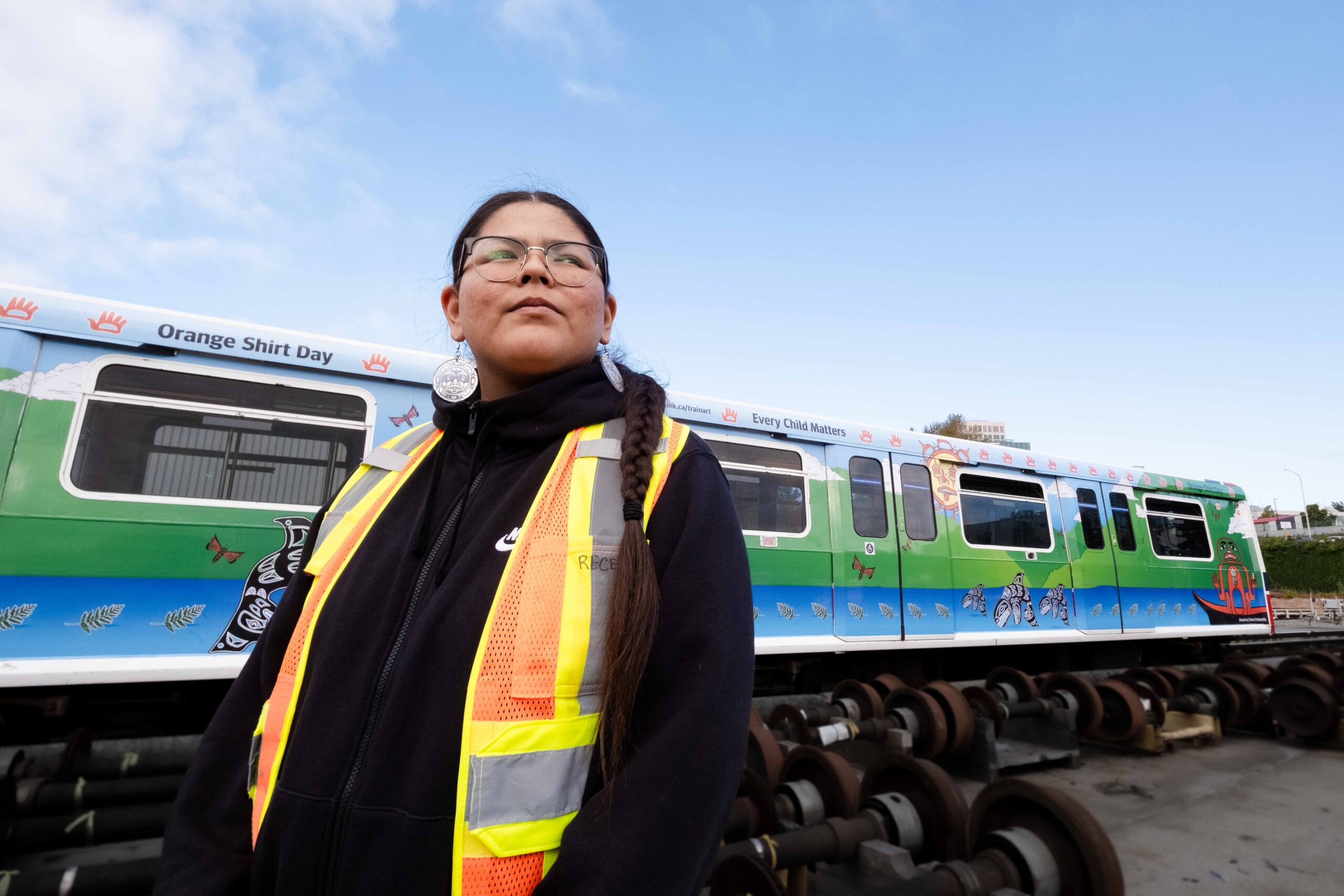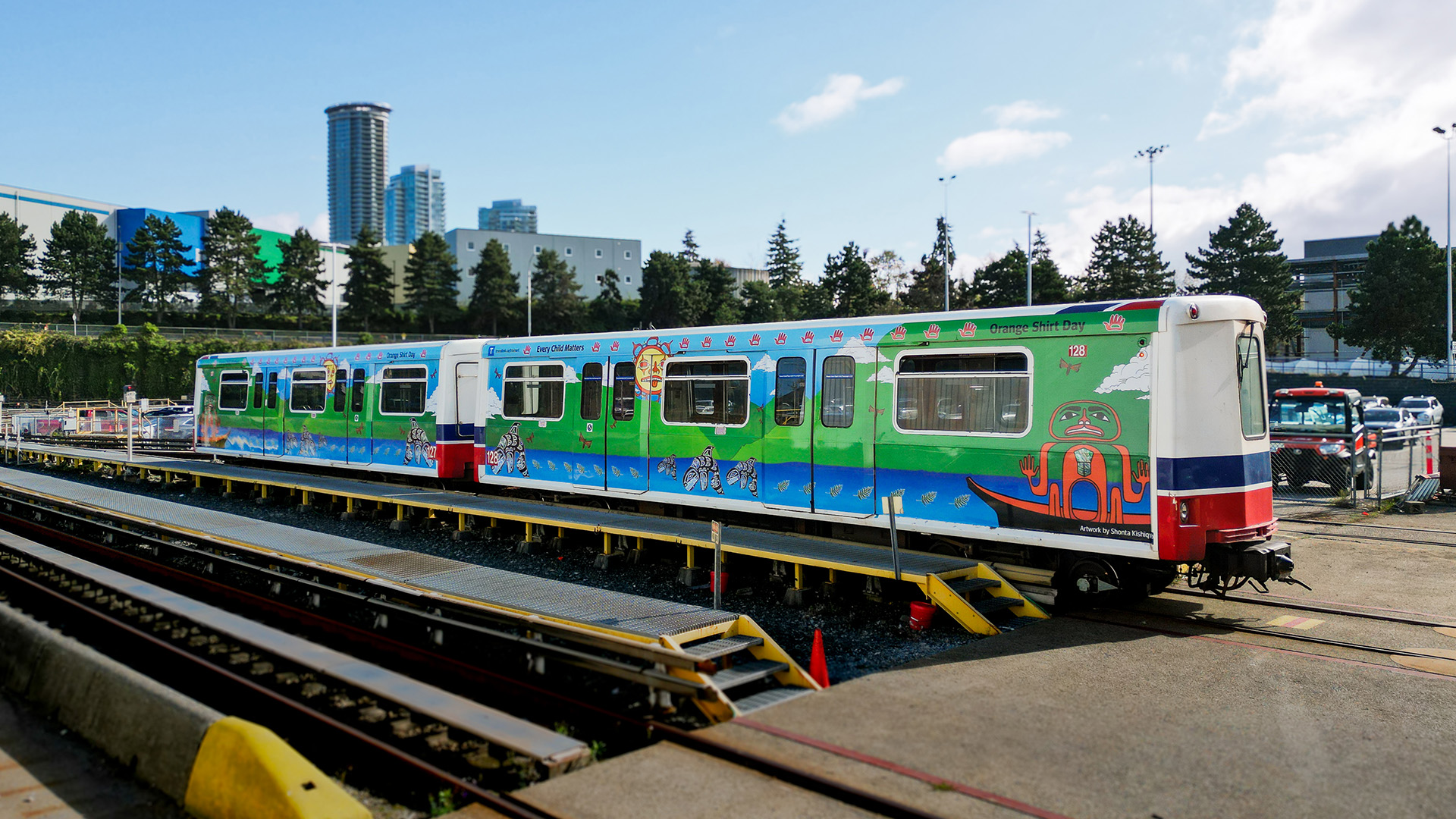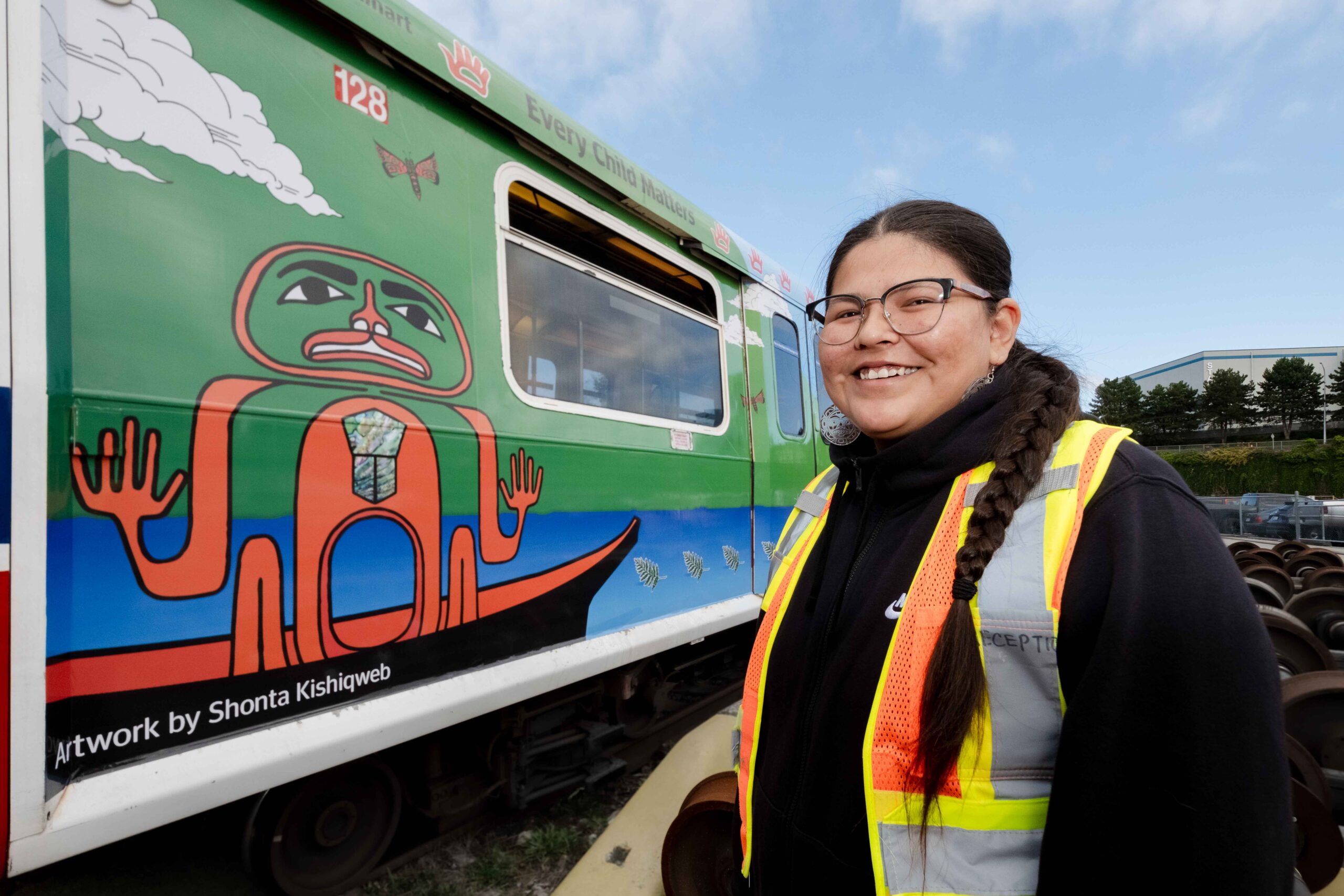Indigenous artist honours and carries on the story of grandparents through art
Indigenous artist honours and carries on the story of grandparents through art

The saying goes you live as long as the last person who remembers you. For Shonta Campbell (Kishiqweb), her grandparents live on as stories in her art.
Both were residential school survivors and Shonta’s grandfather’s powerful story of escape left a lasting impression on her.
That’s why Shonta chose to tell that story as part of her latest digital art piece, which is on display wrapping two SkyTrain cars on the Expo Line.
Shonta’s matriarchal family hails from Lac des Milles Lacs, Ontario, and Minnesota, while her patriarchal roots trace back to Bella Bella, British Columbia, and Ebb & Flow 52 in Manitoba. Shonta has deep familial ties to the Anishinaabe, Hailzaqv, and Wuikinuxv Nations.
“Our families grew up fishing, so he knew how to live off the land,” says Shonta, retelling her grandfather’s story. “That’s why he picked up fishing and took up hiking.
“He hiked for days escaping until he found a canoe and just started paddling. That canoe saved his life, bringing him back home to our family and homelands.”
When Shonta first heard the story, it was about a week before her grandfather’s passing. Up until that point, he hadn’t spoken to her about his residential school experience.
“It was just super emotional,” she says. “I was just thinking about him by himself in that canoe and just paddling by himself, and the strength he had to do that and the trauma that he carried from residential school.”
“But he fought, and he survived, and he lived a good life after that.”
The art also prominently features a pod of killer whales, which Shonta explains represents herself and her three siblings.
Another cherished story she tells on the art is the love between her great-grandparents, Rose and Frank Kishiqwebm, which was passed down by her mother Dana Kishiqweb.
“They would sing love songs to each other in Anishinaabemowin from across the lake while in canoes,” she explains.
These stories are all told against a scene capturing the beauty of Bella Bella, a coastal village on the central coast of British Columbia, roughly southeast of Haida Gwaii.
“It’s so beautiful up there, like the ocean and the mountains — it’s unreal,” Shonta says. “I think about it all the time.”
Truth and reconciliation
This art was unveiled for the National Day for Truth and Reconciliation, which commemorates the history and legacy of Canada’s residential school system. The day also with Orange Shirt Day. The words “Every Child Matters” and “Orange Shirt Day” are also included in the art.
Transit is a unique canvas as it’s a travelling art exhibition.
By installing art on the exterior of transit vehicles, it brings art directly to people, making it accessible to those who might not visit traditional galleries or museums.
Shonta says she is super excited to see her art exhibited this way and for these stories to travel throughout Metro Vancouver.
“It’s going to be viewed in different neighborhoods by different people,” she says. “It’s a public exhibit on public transportation.”

This is TransLink’s first public art installation on a SkyTrain car.
In the past, TransLink has partnered with artists to create art for buses — including a SeaBus vessel, the Burrard Chinook — and at stations, but never before on a SkyTrain car.
“It wasn’t for myself, it was for them.”
Shonta found out about TransLink’s call for artists to create this installation from the Indigenous women with whom she works with as a support worker. They encouraged Shonta to apply.
“It wasn’t for myself, it was for them,” says Shonta, who works in Vancouver’s Downtown Eastside. “They wanted me to do it.”
Shonta says she was both shocked and surprised to be commissioned.
“I just want my loved ones to know what we have recognition, especially the Indigenous community,” she says. “Being a low-income woman from the Downtown Eastside and being Indigenous, there’s a lot of barriers to accessing things like services and recognition.
“That’s why I was so surprised that I actually got picked for this and there’s a lot of good artists in Vancouver.”
When Shonta looks at her art, she thinks about her community. She wants others to do the same when they see the art while riding the SkyTrain.
“I just want people to think about community and what it means to them and what they can do for their community,” says Shonta, “because it’s not just what you can get from your community but what you can give to your community.”







I found Shonta Campbell’s story incredibly moving.
I enjoy traveling by vintage trains, even though there are many modern means of transportation available.
i love traveling by train because its unique experince